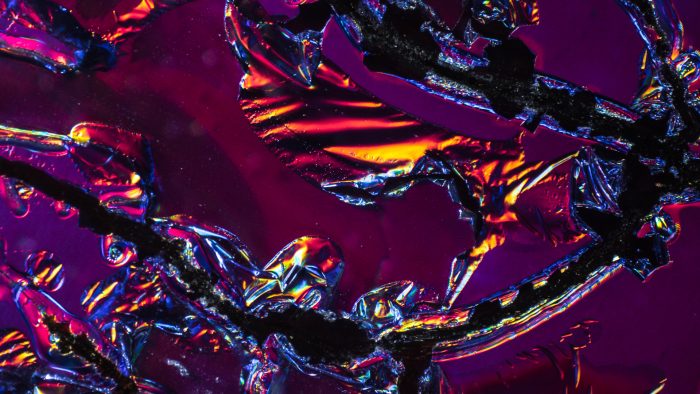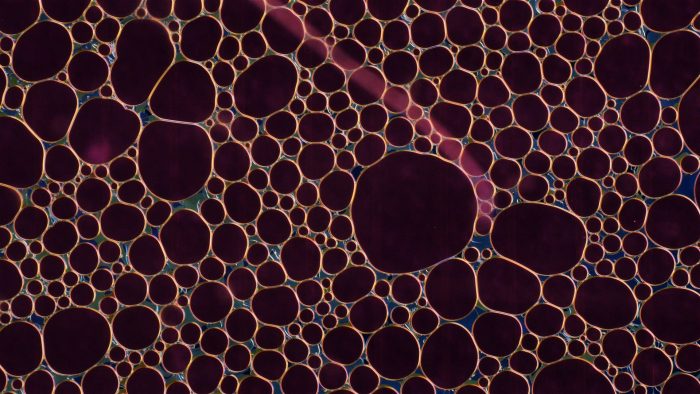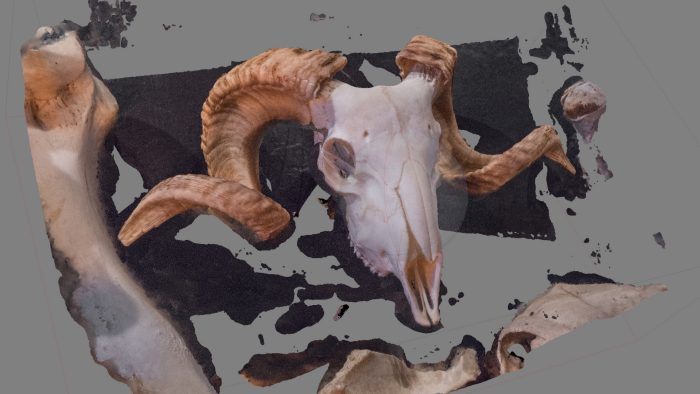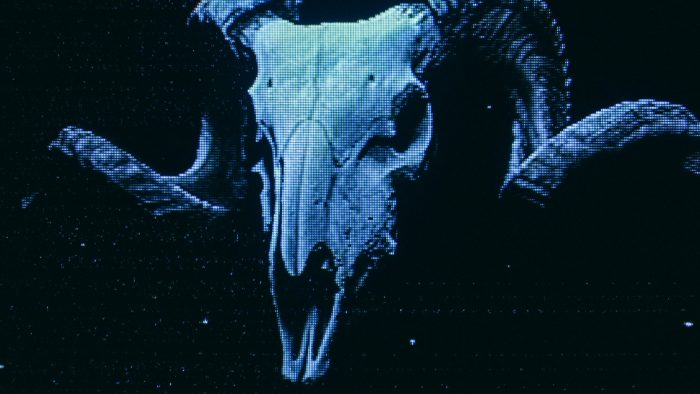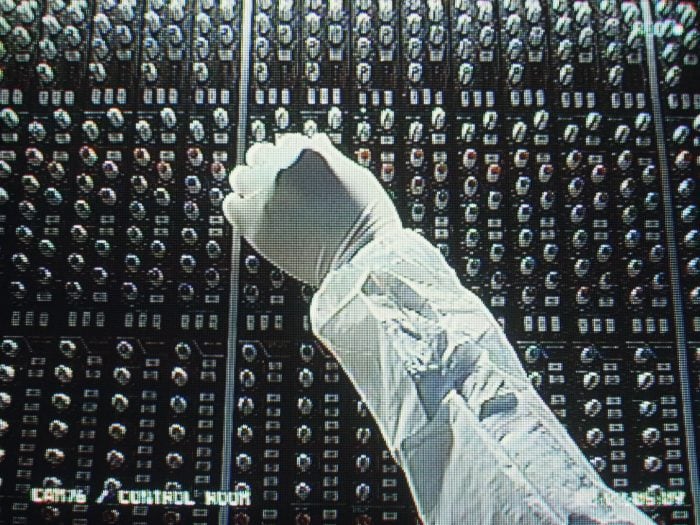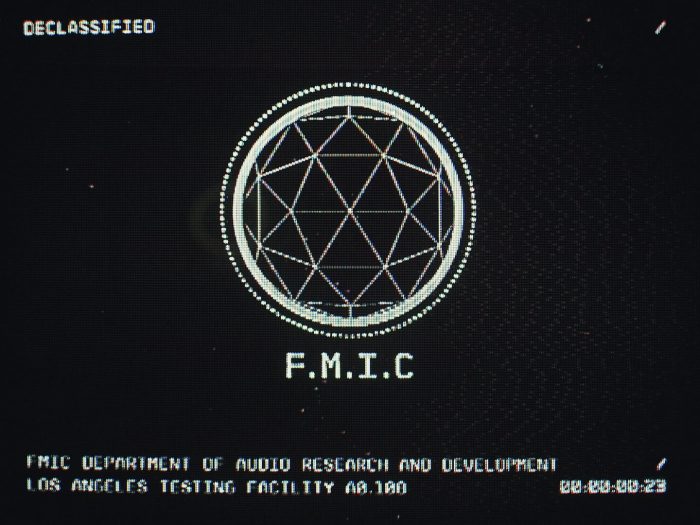As an educator, it is both fulfilling and humbling when former students make waves in their professional careers.
I met Peter Clark in 2013 when he was a student in my Design for Motion class at the Savannah College of Art and Design. One thing I noticed about him right from the start (other than how quickly he picked up new tools, techniques, and creative approaches to projects) was that he was always excited to work with his peers and explore projects through collaboration.
Before graduating, he teamed up with Yeojin Shin and Daniel Uribe—two other stellar alums of the Motion Media Design program at SCAD—to win the 2014 Adobe Design Achievement Award with their project Memory Stream. After he graduated, Peter went to work at Autofuss in San Francisco, where he apprenticed under GMUNK, whom he still collaborates with to this day.
I have enjoyed watching Peter Clark grow as a designer and director, and his work is a constant source of inspiration within my classes. His combination of analog and digital techniques offers visuals that are fresh, unique, and tactile. Yet, the choice of materials and production methods in his work is always driven by concept. Peter’s passion and dedication to his craft have allowed him to carve a path for himself where clients seek him out for his vision. So, I was beyond excited to book him for a workshop at my new home, Western Washington University.
Over 2 Days, students at Western Washington University worked in groups to create video and animation content using a combination of analog and digital techniques. Peter Clark taught them how to use practical effects to create bespoke creative videos. The primary methods used were water cymatics, videography using acrylics, re-photography using a circuit-bending glitch box, and forming sacred geometry patterns out of salt using a Chladni plate.
I sat down with Peter Clark to talk about his work and reflections on the workshop.
A lot of your work combines analog with digital technologies. How would you describe this practice, and what is its appeal to you?
It feels like a symbiotic balance between control. It involves physical and digital tools to achieve a blended output, ideally with some unexpected results along the way. Contemporary digital tools bring a fresh twist on analog techniques that have been around for years, while analog tools can smoothen out digital elements to feel less synthetic and predictable.
In the analog world, you have to deal with a lot of uncontrollable variables that tend to bring all sorts of errors to the forefront. Those unintentional results are why I’m so drawn to the physical space; they surprise me as the creator and make the process of discovery very fulfilling.
I’ve been on several jobs where an error became the core technique used to create the visuals. Ideally, I try to let bits of that discovery process shine through and inspire viewers to question how the piece was made, then experiment with the techniques themselves. Analog techniques also emphasize my favorite element – texture. Anything filmed in the real world has an inherent texture to it, even if it’s a blank surface with a bit of dust or a forgotten fingerprint. Those little details give the artwork an immediate personality or familiarity. Viewing things under a microscope has also been a catalyst for my love of textures. One of the greatest aspects of camera technology is that it reveals the beauty in things we overlook every day. Cooking oils, CDs, broken computer screens, and many other mundane things have such a beautiful ecosystem of texture and color that our eyes can’t normally see. Working with various microscopes and macro lenses has made me much more obsessive in observing my environments, always hunting for strange reflections or intricate surface patterns. I will always appreciate that my work makes me more present and brings me closer to the spaces that I inhabit.
In contrast, the digital space feels much more controlled and synthetic. Something about the way raw digital elements contrast with the natural world has always excited me. It feels like blending analog elements with digital software creates a sense of collaboration with machinery. I experience that collaboration the most when I use the photogrammetry process. The technique revolves around taking several photos of an object, then inputting those images into photogrammetry software. The software tries to piece the images together into a 3D model, which often leads to all sorts of strange results. The models are photo-real but always have some errors like rogue geometry creating holes in the mesh. I love those unexpected distortions, as they are a surprise for me and a window into the process of the work.
Something that’s also important to me is using the analog or digital process as a conceptual element. One example is during the Fender Music Experiments project; we ran several videos through some analog glitch hardware called the Tachyons+ Dreamweapon. The module runs beautifully through a CRT screen, which has an obvious pixel-grid look that anyone born in the 90s will recognize. We used the CRT intentionally as a conceptual element – as the piece was designed to look like security camera footage from a vintage sound lab experiment. We even added fake timestamps and security camera UI to sell the illusion. The glitches and CRT screen were used to build a world where it feels like we’re cutting between various camera feeds around the lab – so the viewer becomes somewhat of a master camera technician or a security guard monitoring the experiments. It’s always exciting to try and draw attention to the project’s medium so that the viewer feels like they’ve become a character in the story.
You talk a lot about process and collaboration and creating unique cultures with each project. Can you tell us more about this dynamic and why it is so important to you?
Working with other artists is such an important aspect for me because they make the process of creation more memorable. My work takes up such a massive chunk of my life, so I want the process of making it to be unique and shared. It’s very rare that I can remember significant moments on jobs where I’m alone in front of my computer. When I get to step away from the machine, load up a camera rig and make a mess with other people – those moments reverberate in my mind when I look back on previous projects. I like to think of my portfolio as a book of memories – each project reminds me of a time in my life of learning experiences with fellow collaborators.
A project that stands out to me is the ISO sculpture that I created with GMUNK and Phil Reyneri. We were brought on by Asia Design Management Forum to create a projection-mapped sculpture in Hangzhou, China. The project started in a familiar digital space for me, Cinema 4D modeling, previs renders, lighting animations, and music composition. Then it quickly grew into something completely new as GMUNK, Phil, and I all flew to Hangzhou.
We spent four days in an abandoned factory that had been repurposed for the event. It was so crazy to see how the event team constructed an entirely new space, along with our colossal metal sculpture. Now the digital creation had become physical, and we got to play with all the beauty that comes from volumetric lighting and surround sound audio. We also saw the disadvantages of physical process; there were a few moments when we thought the whole sculpture would topple. Yet after a few days of welding and projection mapping, we got the piece going, and the musical accompaniment could be heard through the entire warehouse. It was incredibly dystopian and surreal, a memory I’ll never forget.
ISO projection-mapped sculpture in Hangzhou, China
Running around with my camera and capturing the construction process along with all the dystopian elements of the building was incredibly satisfying for me. I have always loved documenting process because it allows me to look over people’s shoulders. Photographing the warehouse reminded me of being a teenager again, taking photos of eroded buildings around my small hometown. For such a brief moment, I was deeply immersed in a whole new culture with my friends and a small design team. This project encapsulates the most valuable aspect of art to me – the best artwork will expose its creators to new facets of our world and change the way we perceive ourselves within it.
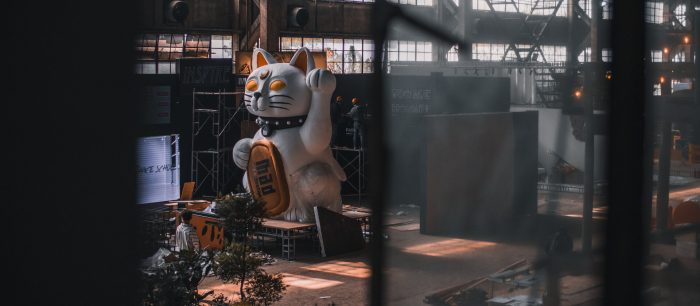
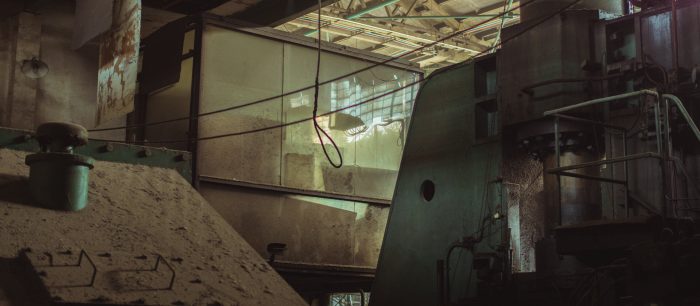
Location photos from ISO sculpture exhibition in Hangzhou, China
After hosting several Motion Design educational workshops over the years, I’ve seen classrooms briefly transform into miniature design studios. The students learn how to initiate collaboration, receive feedback from a director and how to adopt new approaches for creating their work. Tell us about the techniques you taught during our WWU workshop and why you chose them.
Within the workshop, I taught water cymatics, chladni plate cymatics, re-photography through acrylics, and analog glitch process. I chose these techniques because I felt that they were all pretty approachable for students that don’t necessarily have a motion graphics background. Minimal software knowledge was needed to get some visual content. It was really great to see how quickly the students jumped in after my quick tutorials; some of them even used the tools in ways I hadn’t thought of.
One group used the programmable LED strip from the water cymatics rig to film reflections on tin foil, which yielded some wild textural elements. Another group brought their own glitter to use on the chladni plate rig instead of salt, which created all sorts of interesting specular patterns. Every group brought their own backgrounds into the process and were able to make completely different pieces using the same tools.
I also felt it was important to pick techniques that required teamwork, which would introduce students to the collaborative nature of filming on set. Many of the setups required one person to operate the camera and another person to run the visual effects. It was really satisfying to see the groups form up and begin collaborating without hesitation. I learned early on in my career that it’s much easier to try something new when you do it as a group rather than alone.
“One of my favorite parts of the workshop was getting to collaborate with other designers to create something that put each of our individual skills to work in one project. I also really enjoyed getting to experiment with unique equipment that gave us insight into how to use practical effects.” – Daniel Geiszler, Design Student at Western
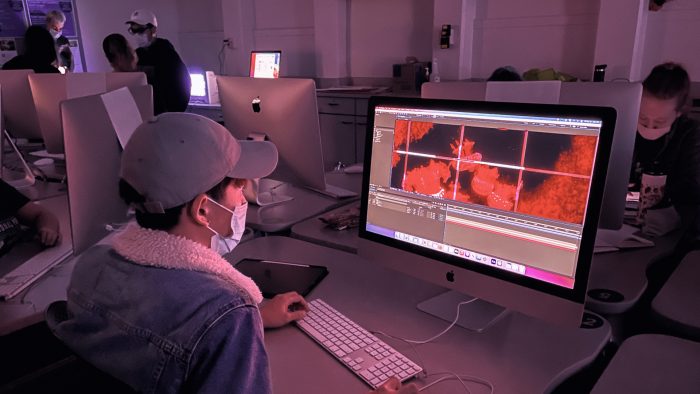
WWU Students collaborating during the workshop
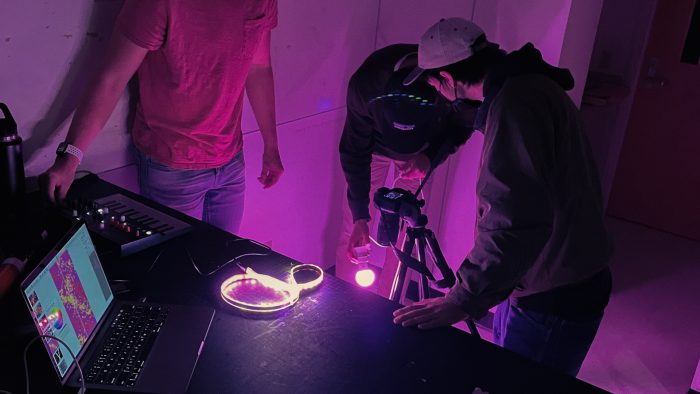
WWU Students collaborating during the workshop
How did you learn about these kinds of techniques?
Many of the techniques I taught in the workshop came from my previous collaborators. Water cymatics and filming through acrylics were approaches that I witnessed at Autofuss when we worked on the OFFF Cincinnati Titles. As a student at SCAD, I had experimented with projecting images onto water or filming through glass, but I had never seen the mediums controlled in such a unique way. The Autofuss crew was very open about their process and I picked up the techniques through their guidance. Chladni plate cymatics was something I discovered through YouTube as an extension of water cymatics. YouTube is a tremendous resource for finding practical science experiments, there’s always someone on that platform exhibiting a beautiful physics phenomenon and explaining how to do it yourself.
The circuit bent setup was something that culminated from my past experiences with hardware glitch. I first started with video bending techniques thanks to Professor Michael Betancourt, whom I met through his survey of motion graphics class at SCAD. He taught the class how to use Hex Fiend, which allows users to import a video and edit the source code. This editing process results in several errors when the computer tries to read back the video file. This became the jumping-off point for my love of video bending, which transitioned from purely digital into analog techniques after my friend Cody Samson sent me the Tachyons+ website.
I quickly reached out to Logan from Tachyons+ for a unit, and months later, I received his Dreamweapon module. It took me about a month to figure out the pipeline of getting content from my computer through the module and output on a CRT screen. Luckily Logan was incredibly helpful with tips and had a ton of documentation on the Tachyons website. It’s inspiring to see the students work with the dreamweapon module because I see a potential starting point for them to blend these vintage tools with new forms of digital media. The realms of extended reality or augmented reality lead to some interesting places for analog glitch; who knows where the next generation of artists will take us.
Can you talk about the workshop theme and how students responded to the challenge?
I decided to theme our workshop around the term ‘Mediums’ due to its double meaning. It refers to artistic mediums as well as people that communicate with spirits. The idea of using multiple visual tools to represent communication with some type of mythical realm felt like a broad conceptual box to let the students explore. I just wanted to give them enough structure to choose what content to work with and then spend the rest of their energy learning the techniques. The concepts they came up with really covered a wide gamut – they referenced everything from astrology, deceased celebrities, and alien contact.
“My favorite part of the workshop was coming to an understanding of what it actually means to experiment! To try something where you have little sway over the outcome, with other buddies who are just as powerless and curious, is so dang inspiring and informative!” – Michelle McDonald, Design Student at Western.
The students were also given a variety of short sound loops to work with. It was fascinating to see how some groups used the same audio but came up with completely different ways to synchronize their piece to the sound. The Michael Jackson tribute was especially fun when they inserted some of their own sound effects on top.
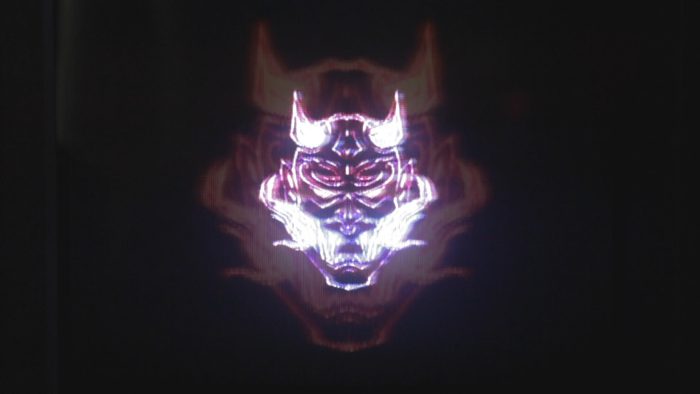
Still from student group submissions during the workshop

Still from student group submissions during the workshop
Do you envision running more professional workshops in the future?
I hope to run more workshops of some kind in the future, perhaps exploring different techniques based on the audience. It’s incredibly fulfilling to pass on the process that I’ve learned from senior artists to younger generations. It feels a lot like creative karma, a positive energy that I was given and I should pass on to others. I’ve also been investing in more analog glitch modules, so future workshops could potentially dive deeper into different glitch techniques that I’ve been exploring. I’m not sure if another workshop will happen, but I’m tremendously satisfied with the memories I’ve made with the students at WWU, and I hope to experience that same sense of community again soon.
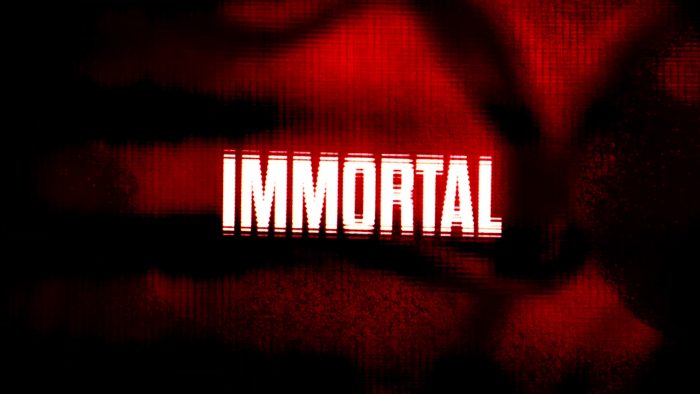
Still from student group submissions during the workshop
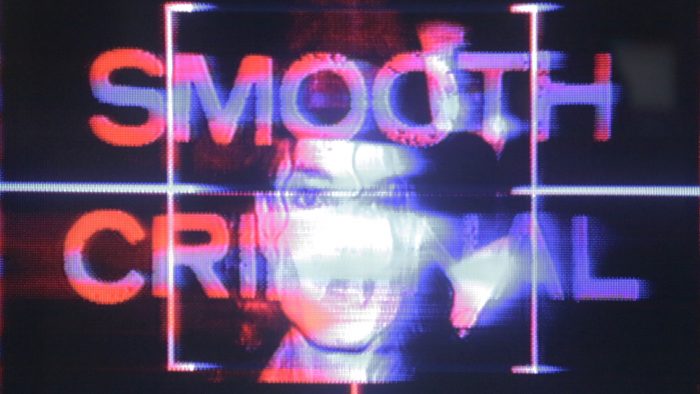
Still from student group submissions during the workshop
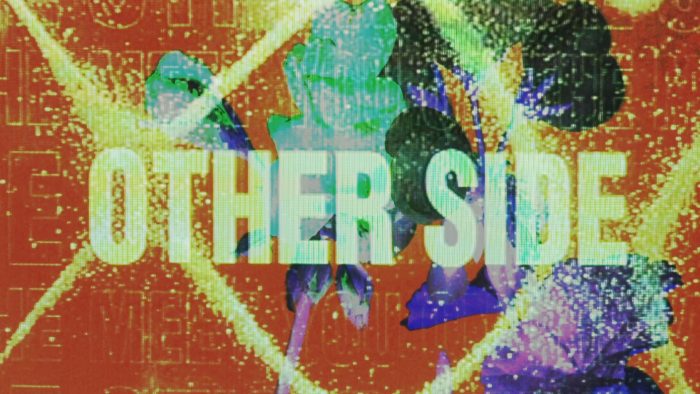
Still from student group submissions during the workshop
Special thanks to all the students who helped me run the workshop; without you these setups wouldn’t have been possible.
Student Credits:
Ximena Alvarez-Bravo, Jady Ankeny, Bella Barni, Leah Berkowitz, Jade Blue, Olivia Chasteney, Charlotte Curry, Finn Donnelly, Nick Gardner, Daniel Geiszler, Logan Hough, Gretchen Immel, Mac Jiran, Brookelyn Jones, Saroth Kruy, Emma Larson, Hung Le, Erin McCoy, Michelle McDonald, Victoria Mota-Garcia, Larry Obernberger, Cody Pham, Luke Shelley, Joshua Shinoda, Charlie Sperry, Rhys Templeton, Isaiah Valera, Katie Werner, Peyton Wood







